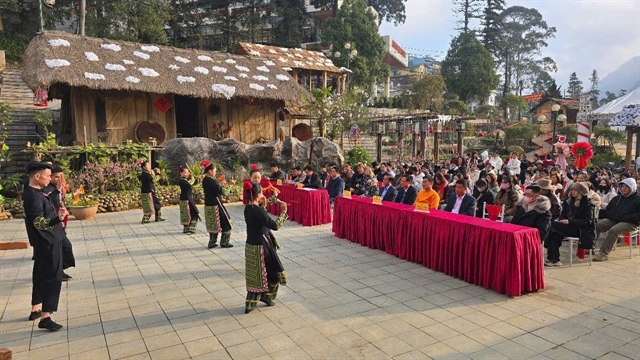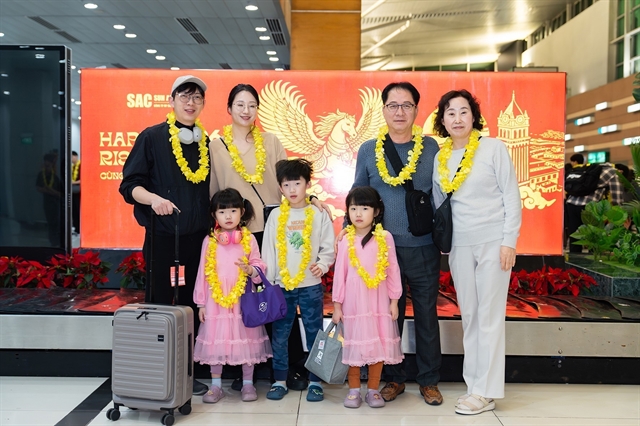 Opinion
Opinion

Export turnover of fruits and vegetables has exceeded that of rice for the first time, Agriculture and Rural Development Minister Nguyễn Xuân Cường tells Việt Nam News in a year-end talk on agricultural restructuring
 |
| Minister of Agriculture and Rural Development Nguyễn Xuân Cường |
Export turnover of fruits and vegetables has exceeded that of rice for the first time, Agriculture and Rural Development Minister Nguyễn Xuân Cường tells Việt Nam News in a year-end talk on agricultural restructuring
Can you list some of the important results after three years of implementating the agriculture restructuring programme?
Several initial important accomplishments can be mentioned.
First, production has neared world standards, for instance, in pig and poultry breeding, and in brackish water shrimp and tra fish.
For the first time, our vegetable and fruit export turnover reached $2.5 billion, higher than that of rice.
Many localities implementing agriculture restructuring have been able to demonstrate the benefits of focusing on their strengths like Đồng Tháp Province in the Mekong Delta, Lâm Đồng Province in the Central Highlands region and Hà Giang Province in the northern mountainous region. The restructuring process has benefited farmers in these provinces.
However we have to affirm that agriculture restructuring is a long-term process. We cannot do it in a few years.
Small-scale agriculture production with low productivity is still common in the country.
Market risks as well as the risk of natural disasters are huge. To address these risks as well as some fundamental shortcomings, we have to focus on measures to accelerate and expand large-scale production, while reducing small-scale production. Once we do this, agriculture restructuring would have been successful.
Some people say that agriculture restructuring should not focus just on food security, that farmers need to make a profit, too. What do you think?
They are absolutely right. The final goal of production is efficiency to improve life quality for producers, including farmers and people directly involved in production. Therefore we must select products in accordance with market demand.
The world population is seven billion, half of whom consume rice. Global rice supply is about 35 million tonnes, with a total value of approximately $12 billion. Many countries like Thailand, Cambodia, China and India have more advantages for rice production than Việt Nam.
The Party, National Assembly and Government have directed localities and farmers to use rice fields for other purposes so as to achieve greater efficiency and proper use of natural resources. The target is to have about 700,000 hectares of rice fields used for other purposes by 2025.
In the context of the country’s integration and increasingly competitive markets, what has the Ministry done, policy-wise, to help farmers and enterprises speed up changes in land use?
I have to affirm that our open market policy is very good and active, particularly since 2007, when we joined the World Trade Organisation. We have been proactive in our integration and have signed ten free trade agreements. We negotiated other free trade agreements at the highest level, like the Trans-Pacific Partnership.
2016 has been a very challenging year for the agriculture sector. Natural disasters have occurred throughout the year.
However, so far, total farm produce export turnover has reached US$31 billion, compared to $30.14 billion last year.
However, we must try harder. We must design solutions in accordance with integration for imported products to ensure legal competitiveness in the domestic market, then boost domestic production.
We also have yet to bring into full play the potential of dairy products, vegetables and fruits.
Following directions of the Government, the Ministry of Agriculture and Rural Development has worked closely with the Industry and Trade Ministry, localities and sectors to foster expansion of markets for local farm produce.
We’ve worked with Australia and this country has agreed to import shrimps. When the Australian market opens, it will create a good foundation for Vietnamese farm produce to be exported to many “hard” markets in the world.
The Ministry is also working with the Tra Fish Association to continue the legal fight against markets that continuously place objections, like the US, a big importer of our seafood products.
As 2016 comes to a close, what message do you have for farmers and enterprises?
We can see 2016 as a very difficult year for agriculture, and therefore, for our farmers. They have had to suffer a historic cold wave in 14 northern provinces, causing huge production losses. During the first months of the year, the entire Mekong Delta, central, southern and Central Highlands regions faced the worst drought and saline intrusion. In the last few months, three storms, one after another, hit the central region, triggering repeated flooding.
In this situation, a new, constructive government established this year has gained the trust of farmers and enterprises. This is demonstrated by the establishment of new enterprises in the sector. Farmers and firms are both committed to building new rural areas and restructuring the sector.
Going into 2017 with more favourable weather conditions expected, along with our considerable efforts, we expect it will be a victorious year for the agriculture sector in general and farmers in particular. - VNS




